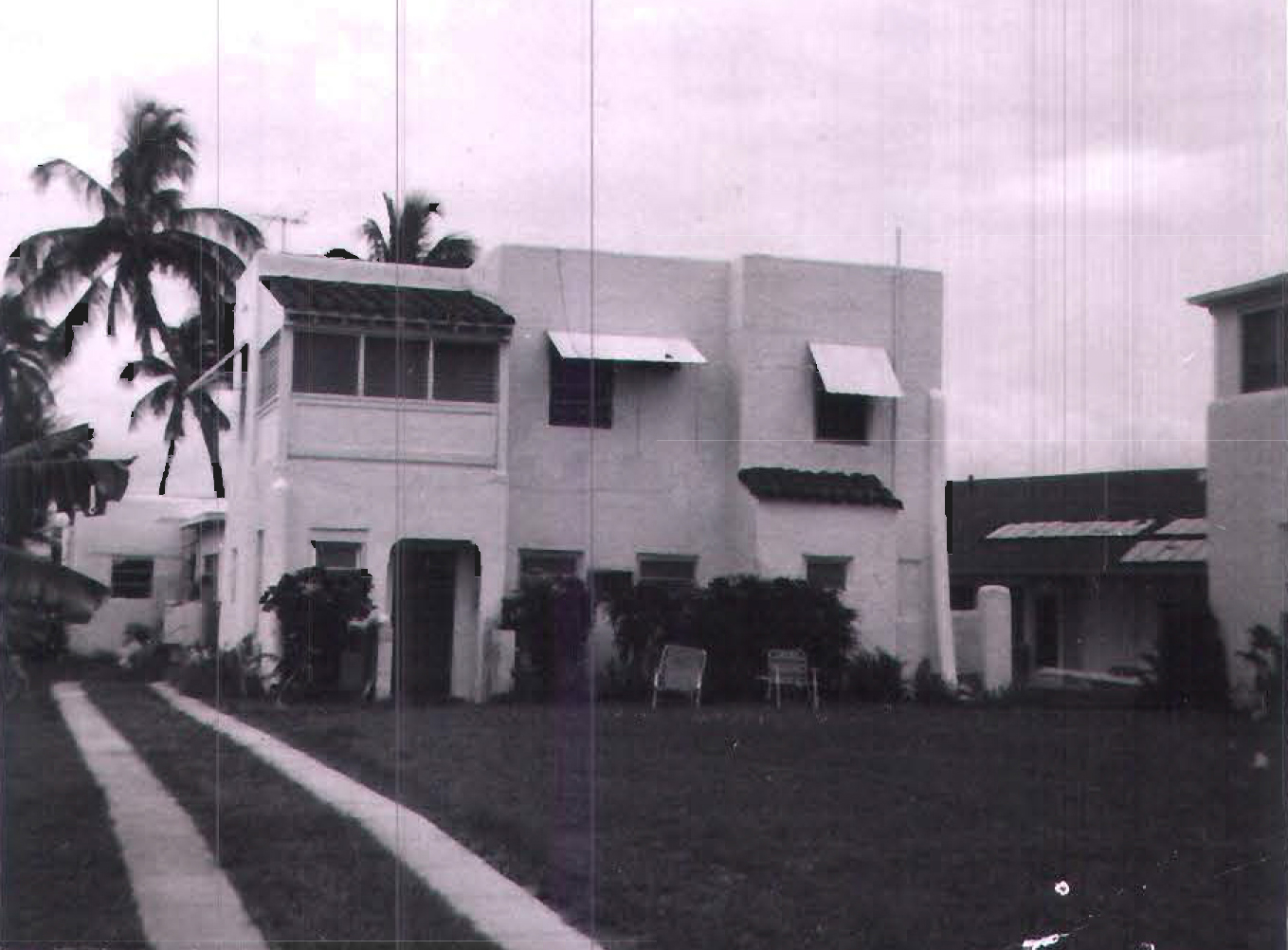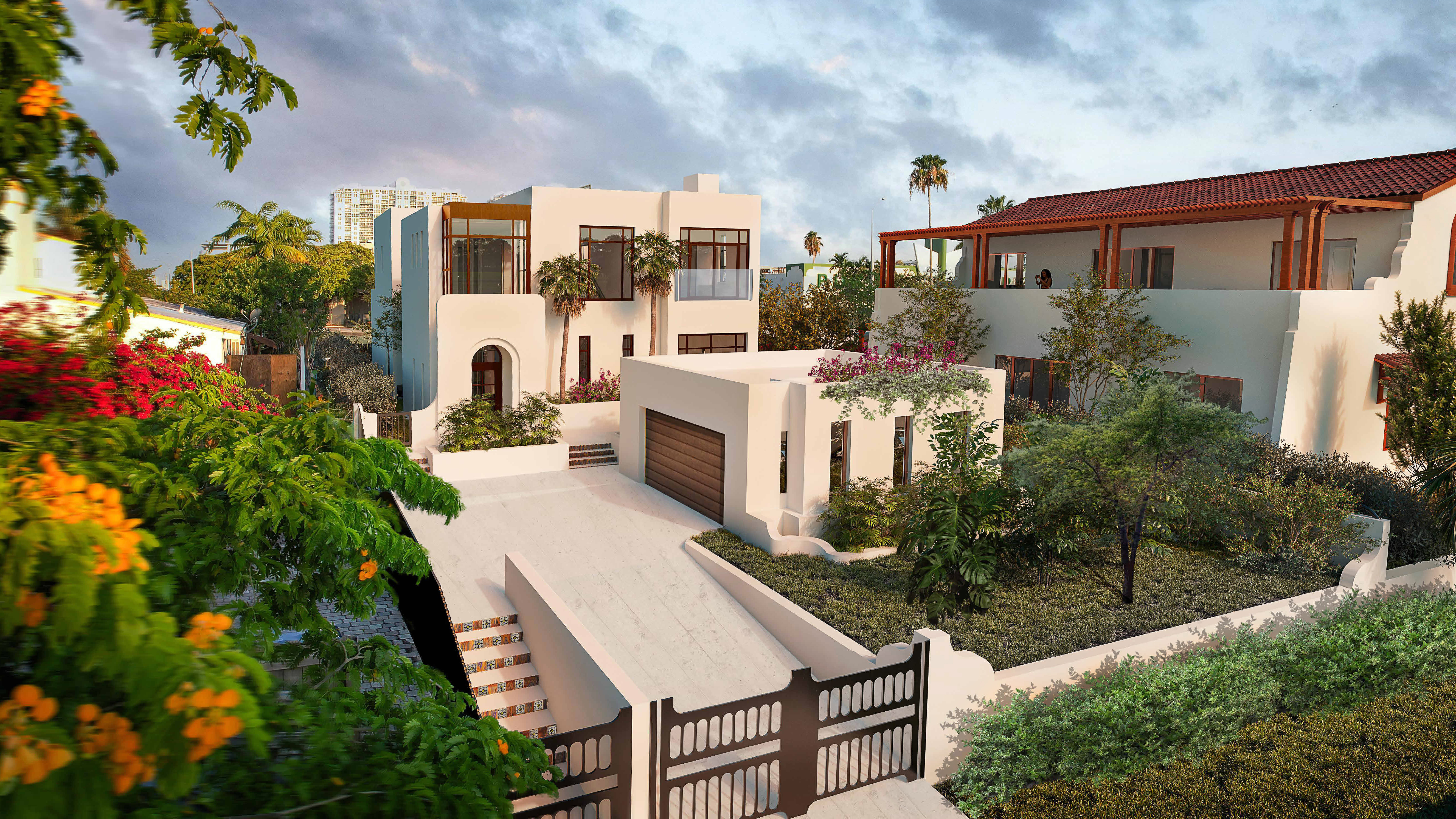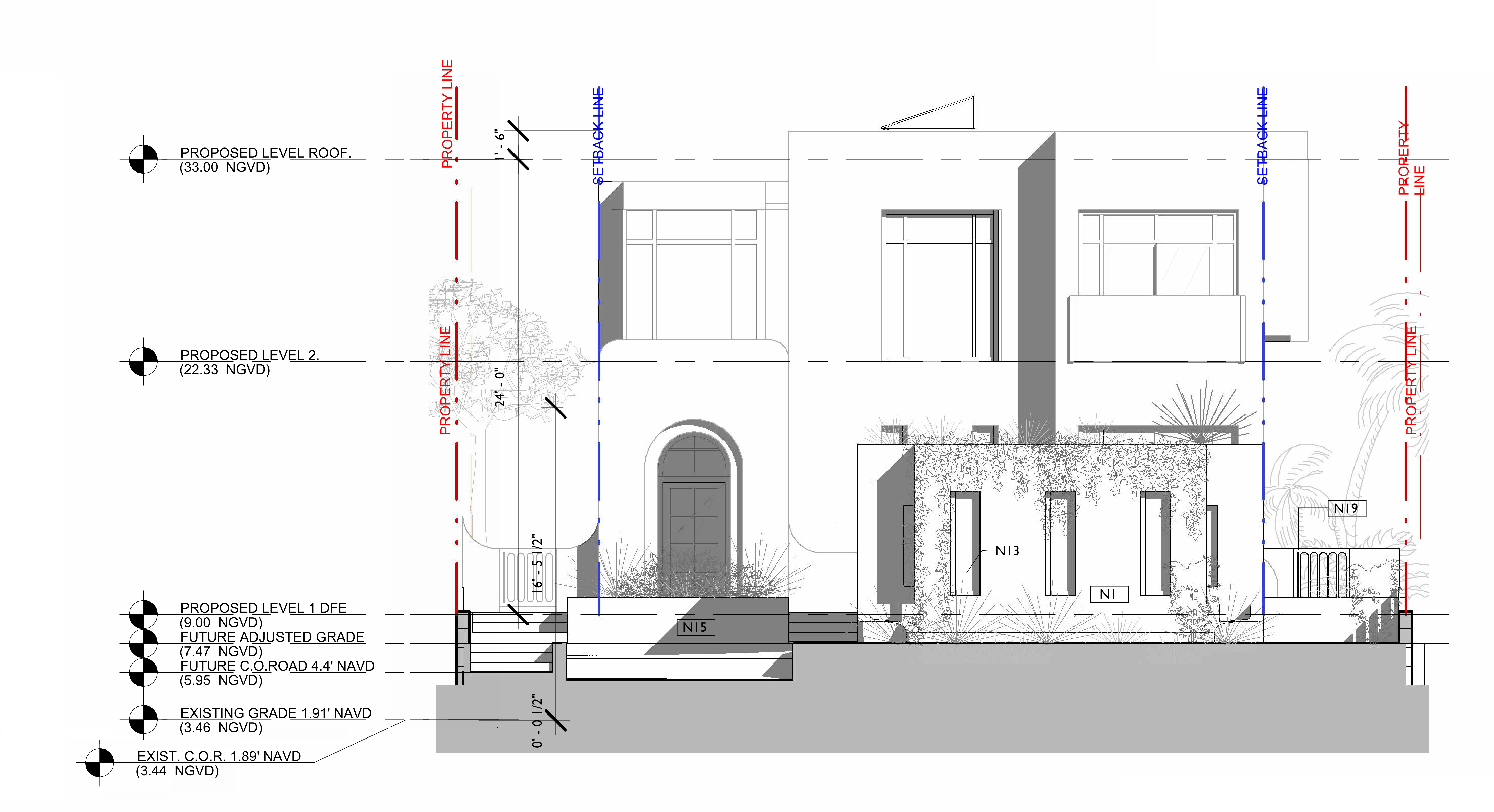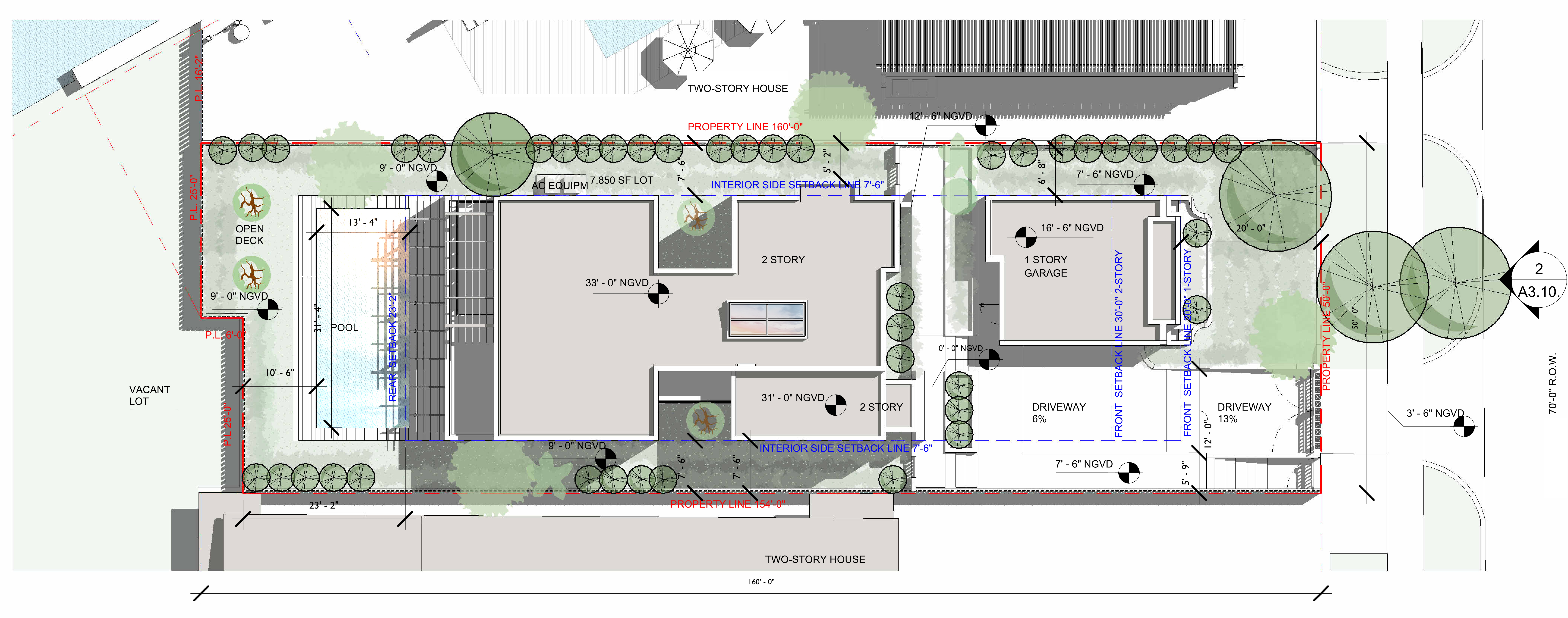c a s a m i s i o n
layering a facade creates spaces of interest





Miami, FL
year: 2023
role: conceptualization, design, rendering, rendering post-production, modeling, historic research, zoning
year: 2023
role: conceptualization, design, rendering, rendering post-production, modeling, historic research, zoning
Originally built in the 1920’s, the original home on thissite was slated for demolition due to years of misuse, rising tides and structural dilapidation.
The proposed design uses many elements of the historic design which make this property one of the most unique in the city. The Mission architectural style, widely seen in historically designated buildings across
the city, informed the rich facade layering of the house. Mission style’s timeless nature allowed the evocation of the historic house, creating moments of interest throghout all spaces.
The proposed reconstruction is bound by setbacks imposed by current development regulations, and respects the design intent of the neighboring structures, while being significantly raised in elevation for passive ocean-level rise protection. To recall and accentuate the original entrance, the awning is pulled forward and creates a shaded porch. The aperture into the porch is an arched opening, recalling the curved corners of the original entrance in a more pronounced manner. Originally, a long sprawling yard allowed significant distance between the house and the street. In our reconstruction, the building follows the same setback distance as the original house, leaving significant space between itself and the road.
The neighborhood in which this house is proposed was designated as a Historic District in 1999 for its embodiment of the distinctive characteristics of its historical period, architecture, design style and construction methods. The area is recognized for its association with events that have significantly contributed to the history of the city. The historic district stands as a testament to rapid development, particularly during the city’s initial major land development period from 1915 to 1926. Moreover, the area holds significance in its connection to two of the city’s earliest pioneers. The architectural styles prevalent in the neighborhood mirror those of the 1920s, encompassing ten distinct styles ranging from Mediterranean Revival to Med/Deco Transitional, Streamline Moderne, and eventually Post WWII Modern and Garden Apartment Styles. In essence, the neighborhood possesses high artistic value and historical significance, warranting its designation as a Historic District and the need for its reimagining as a building that will be celebrated as timeless.
The proposed reconstruction is bound by setbacks imposed by current development regulations, and respects the design intent of the neighboring structures, while being significantly raised in elevation for passive ocean-level rise protection. To recall and accentuate the original entrance, the awning is pulled forward and creates a shaded porch. The aperture into the porch is an arched opening, recalling the curved corners of the original entrance in a more pronounced manner. Originally, a long sprawling yard allowed significant distance between the house and the street. In our reconstruction, the building follows the same setback distance as the original house, leaving significant space between itself and the road.
The neighborhood in which this house is proposed was designated as a Historic District in 1999 for its embodiment of the distinctive characteristics of its historical period, architecture, design style and construction methods. The area is recognized for its association with events that have significantly contributed to the history of the city. The historic district stands as a testament to rapid development, particularly during the city’s initial major land development period from 1915 to 1926. Moreover, the area holds significance in its connection to two of the city’s earliest pioneers. The architectural styles prevalent in the neighborhood mirror those of the 1920s, encompassing ten distinct styles ranging from Mediterranean Revival to Med/Deco Transitional, Streamline Moderne, and eventually Post WWII Modern and Garden Apartment Styles. In essence, the neighborhood possesses high artistic value and historical significance, warranting its designation as a Historic District and the need for its reimagining as a building that will be celebrated as timeless.